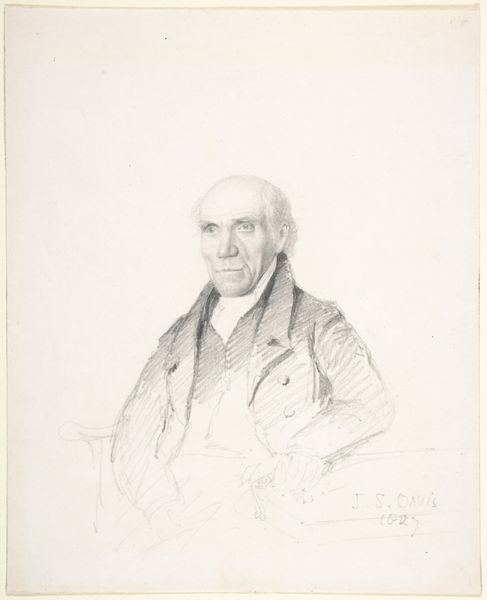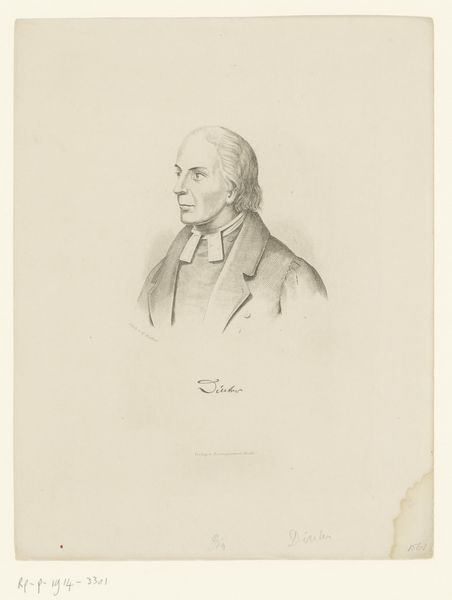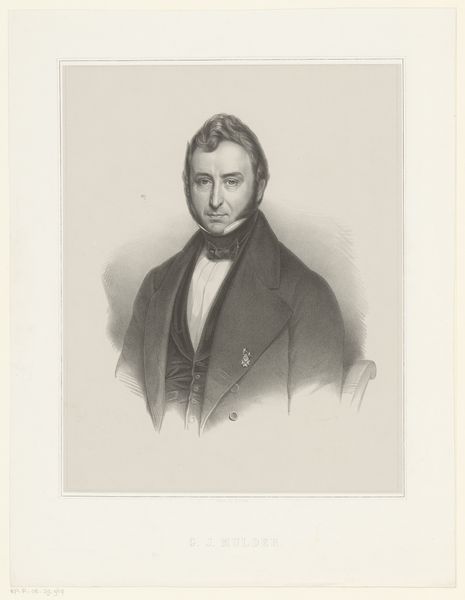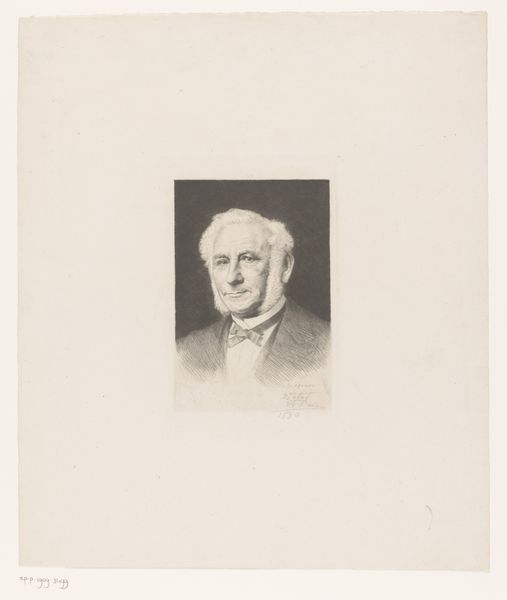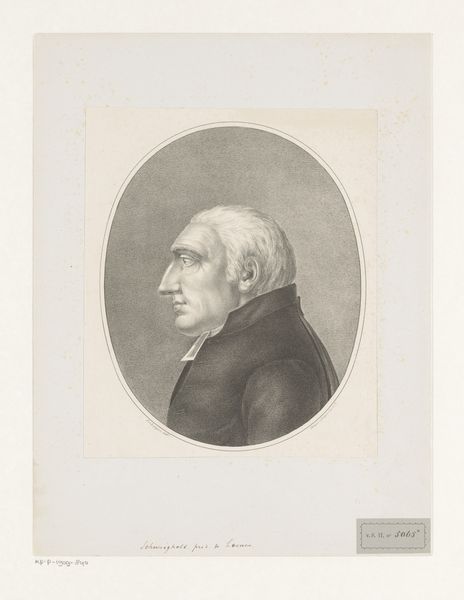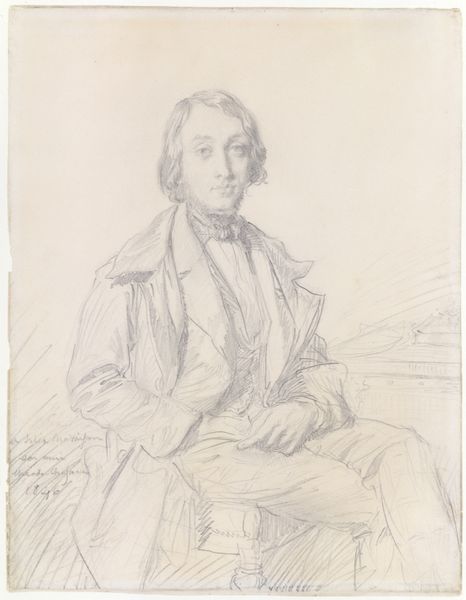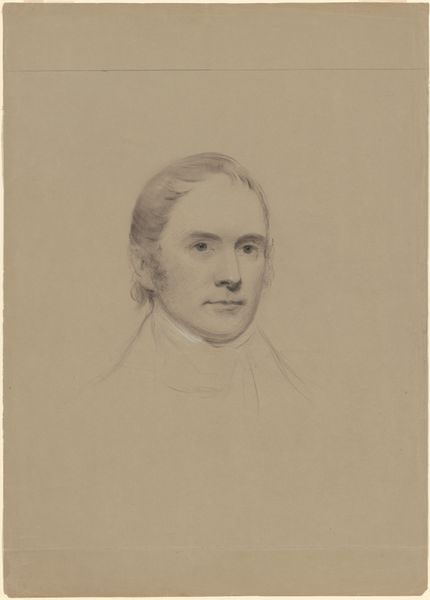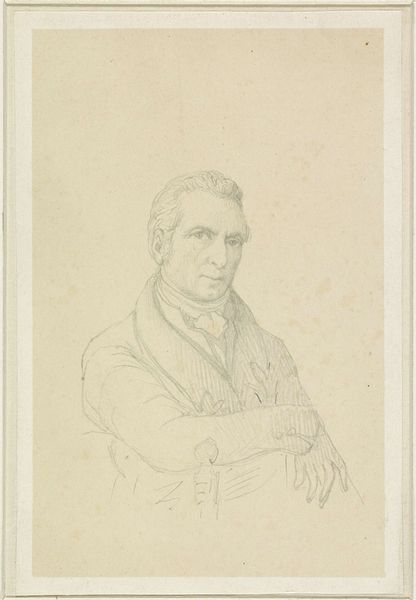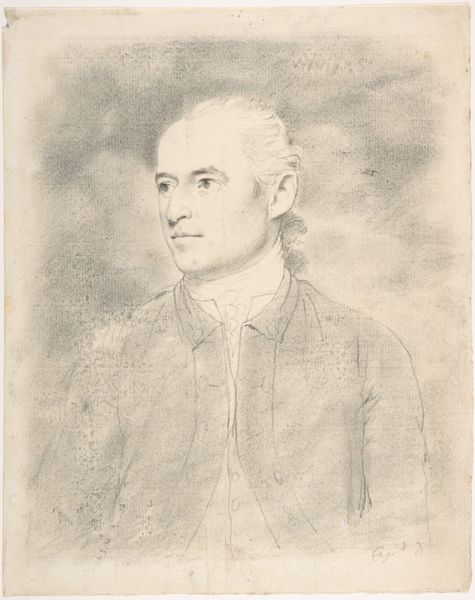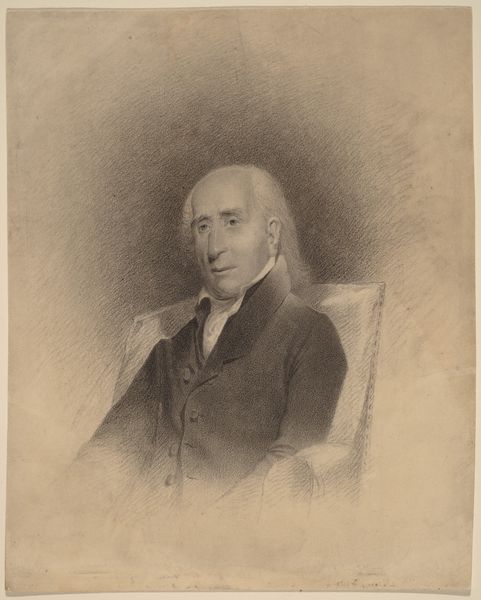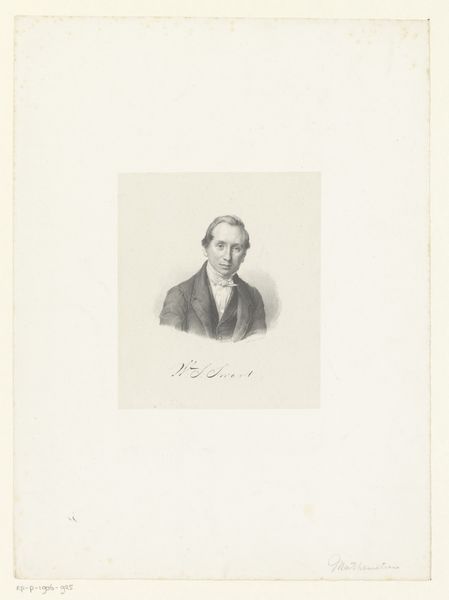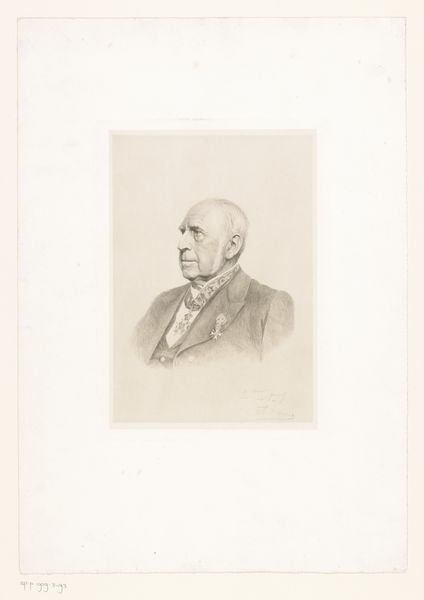
drawing, pencil
#
portrait
#
drawing
#
16_19th-century
#
german
#
pencil drawing
#
romanticism
#
pencil
#
portrait drawing
Copyright: Public Domain
Julius Hamel made this portrait of Johann David Passavant using graphite. It’s a humble medium, yet capable of great subtlety. The artist coaxes a full likeness with just a few precisely placed lines. The soft, grey tones give the portrait a sense of immediacy, as though Passavant has just turned to meet our gaze. But the visible pencil strokes also remind us of the labor involved. Each line is a deliberate mark, a testament to Hamel's skill and attention. While seemingly simple, drawing requires immense control. Think of graphite pencils today: they’re made from a mixture of graphite and clay, which determines the hardness of the lead. The higher the clay content, the harder the pencil, and the lighter the mark. Hamel likely worked with a range of pencils to achieve the variations in tone. Looking closely, you can appreciate how Hamel used this simple material to capture not just Passavant's physical appearance, but something of his character. A reminder that even the most unassuming materials can be transformed into art through skill, labor, and vision.
Comments
No comments
Be the first to comment and join the conversation on the ultimate creative platform.
